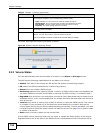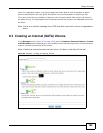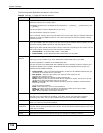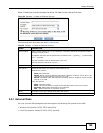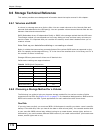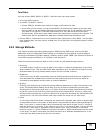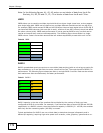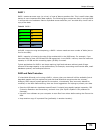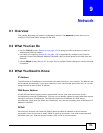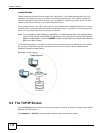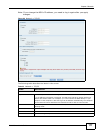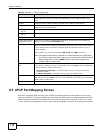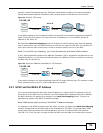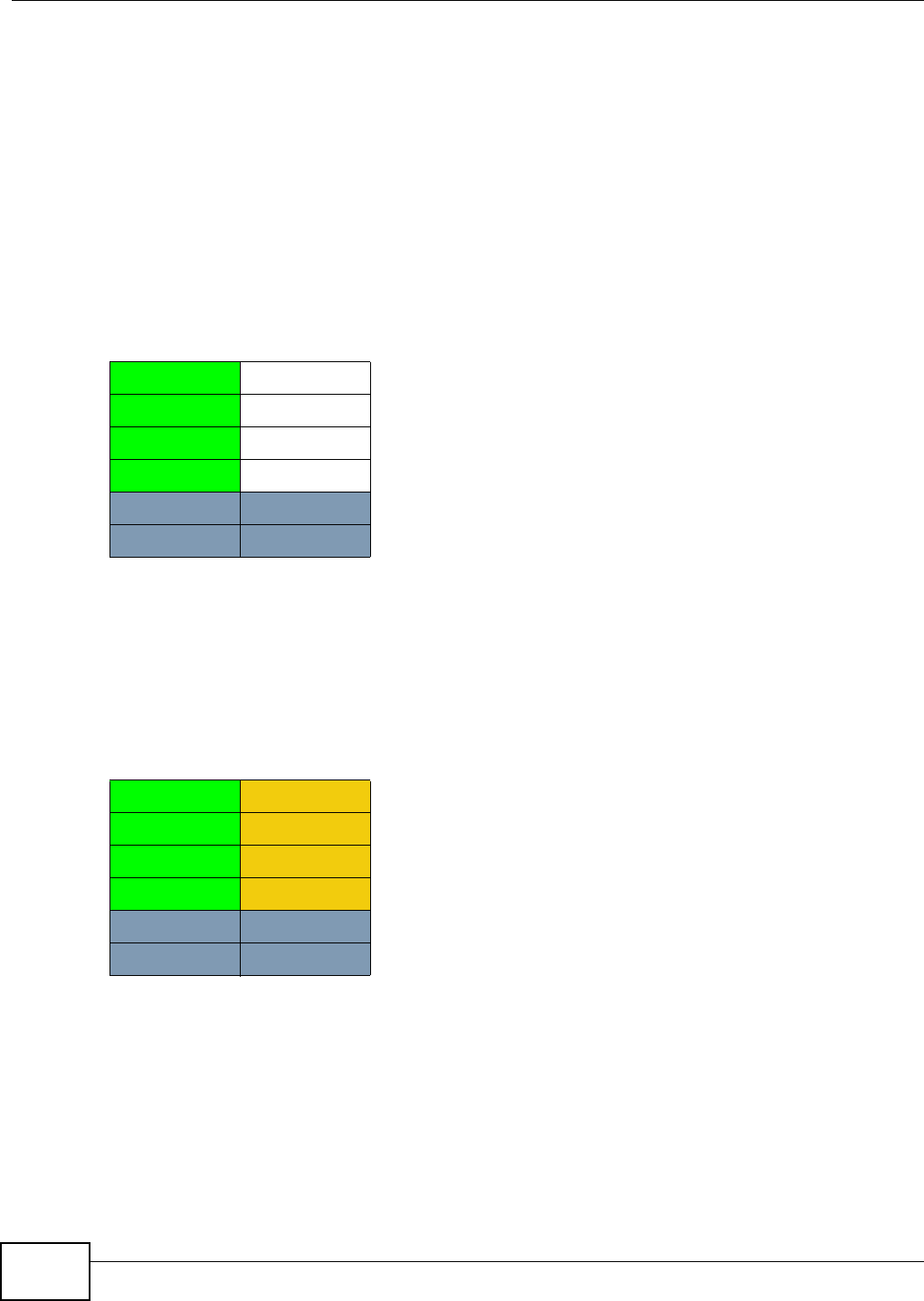
Chapter 8 Storage
Media Server User’s Guide
172
Note: In the following figures, A1, A2, A3 and so on are blocks of data from the A file.
Similarly, B1, B2, B3 and C1, C2, C3 ar blocks of data from the B and C files.
JBOD
JBOD allows you to combine multiple physical disk drives into a single virtual one, so they appear
as a single large disk. JBOD can be used to turn multiple different-sized drives into one big drive.
For example, JBOD could convert 80 GB and 100 GB drives into one large logical drive of 180 GB. If
you have two JBOD volumes (with one disk in each), a failure of one disk (volume) should not affect
the other volume (disk). JBOD read performance is not as good as RAID as only one disk can be
read at a time and they must be read sequentially.
The following figure shows disks in a single
JBOD volume. Data is not written across disks but written sequentially to each disk until it’s full.
RAID 0
RAID 0 spreads data evenly across two or more disks (data striping) with no mirroring nor parity for
data redundancy, so if one disk fails the entire volume will be lost. The major benefit of RAID 0 is
performance. The following figure shows two disks in a single RAID 0 volume. Data can be written
and read across disks simultaneously for faster performance.
RAID 0 capacity is the size of the smallest disk multiplied by the number of disks you have
configured at RAID 0 on the NSA. For example, if you have two disks of sizes 100 GB and 200 GB
respectively in a RAID 0 volume, then the maximum capacity is 200 GB (2 * 100 GB, the smallest
disk size) and the remaining space (100 GB) is unused.
Typical applications for RAID 0 are non-critical data (or data that changes infrequently and is
backed up regularly) requiring high write speed such as audio, video, graphics, games and so on.
Table 30 JBOD
A1 B1
A2 B2
A3 B3
A4 B4
DISK 1 DISK 2
Table 31 RAID 0
A1 A2
A3 A4
A5 A6
A7 A8
DISK 1 DISK 2



